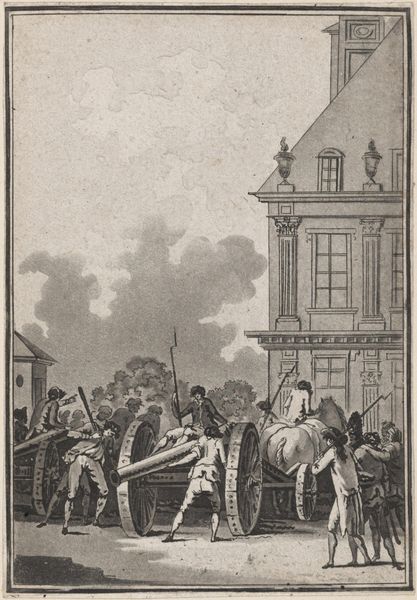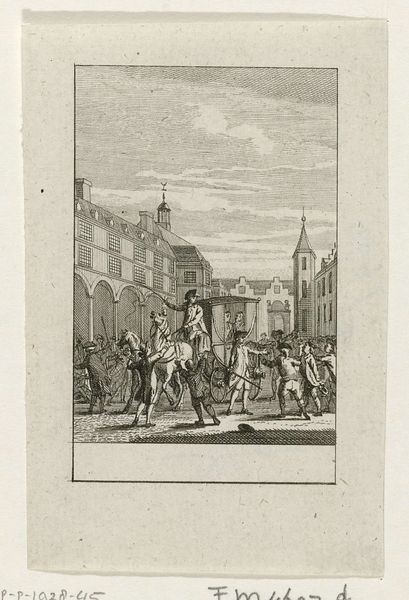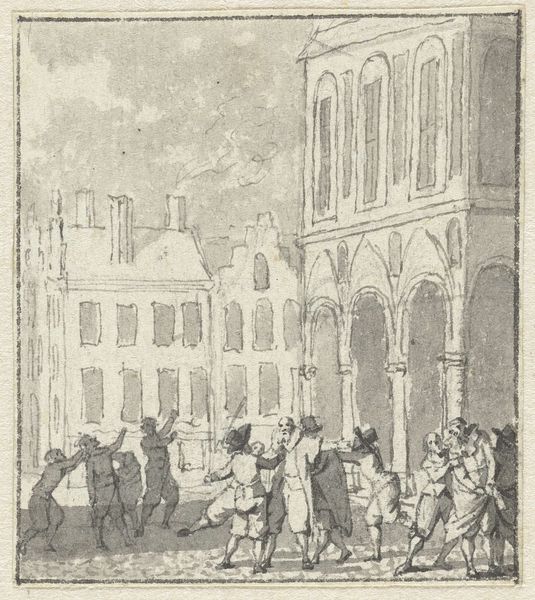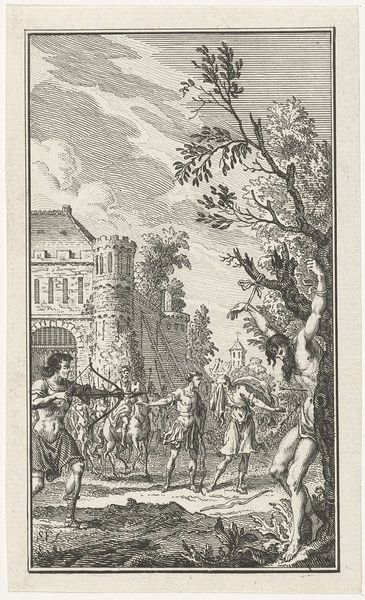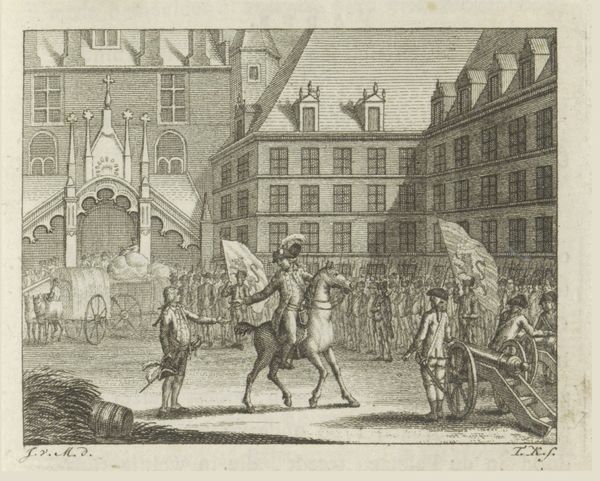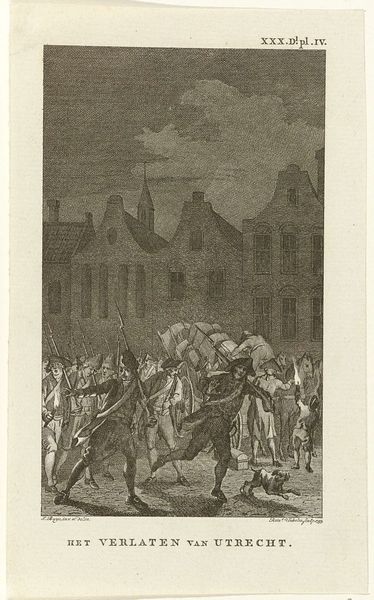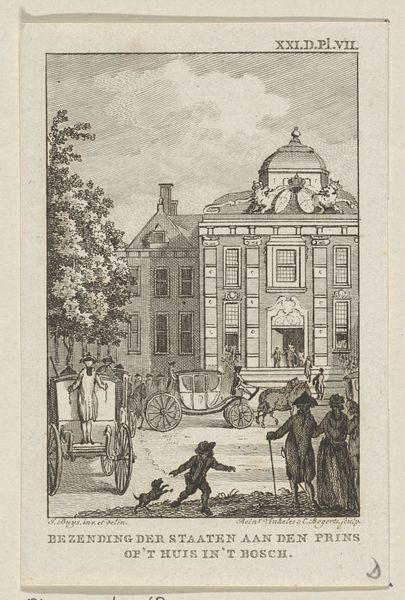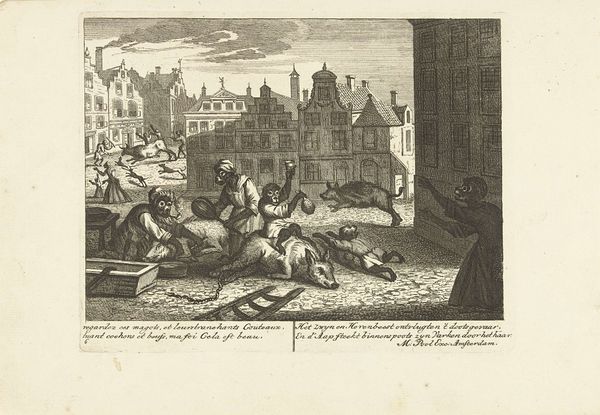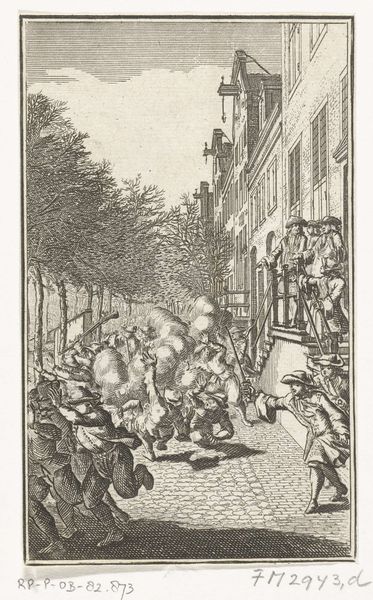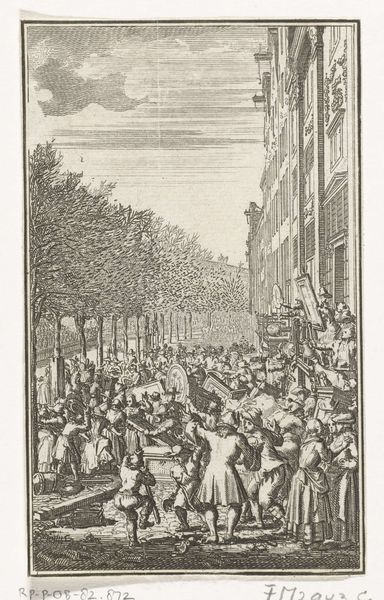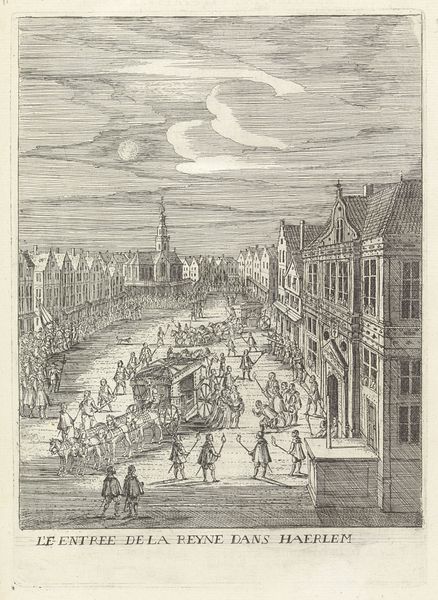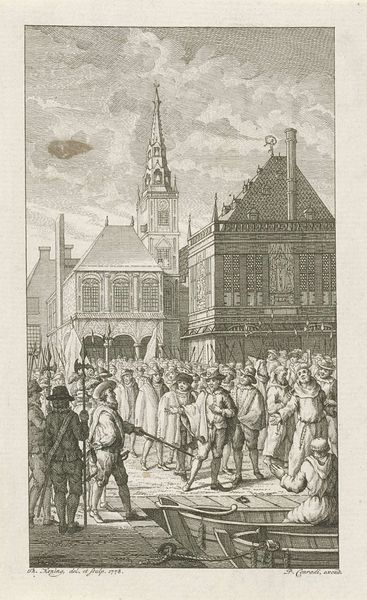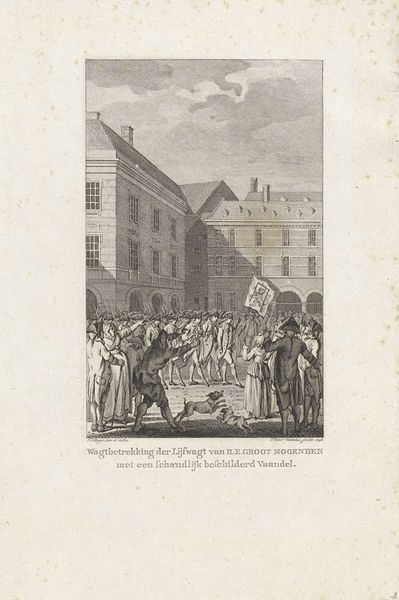
Dimensions: height 65 mm, width 55 mm
Copyright: Rijks Museum: Open Domain
Editor: Here we have a pen and ink drawing titled 'In 't Jaar 1569,' made circa 1789-1810 by an anonymous artist. It feels like a captured historical moment, almost like a sketch from a much larger painting. What jumps out at you? Curator: This sketch offers a glimpse into the performance of history. Notice the title, “In 't Jaar 1569” – already framing the work as a look back. The artist isn't simply depicting an event; they're consciously referencing a specific historical moment for their 18th/19th-century audience. What do we know about 1569 in Dutch history? Editor: Well, the Eighty Years' War was underway, a crucial period in the formation of the Dutch Republic... So, you're saying this drawing is less about historical accuracy and more about… Curator: …the *idea* of that past, and its political resonance during the late 18th and early 19th centuries. Think about the socio-political context of when this was made; the Batavian Republic, French influence… Nostalgia for a heroic, independent past would have been a potent force. How does the *style* of the drawing reinforce or complicate that message? Editor: I see what you mean. It’s loose, sketch-like, not grandiose like other history paintings of the period. Maybe it suggests a more 'raw' or immediate connection to the past, less staged? Curator: Exactly! And consider who gets to make these kinds of historical images and what purpose it serves for the cultural elite. Editor: It’s interesting to think about how even a seemingly simple sketch can be loaded with political meaning and contribute to shaping national identity. I will definitely be paying more attention to context from now on! Curator: Indeed. By looking beyond the immediate subject, we uncover the deeper social and political currents shaping the artwork and its reception.
Comments
No comments
Be the first to comment and join the conversation on the ultimate creative platform.
